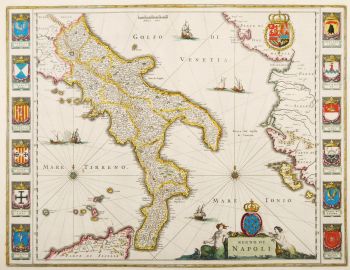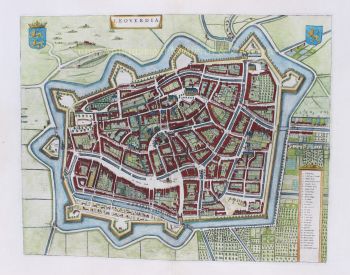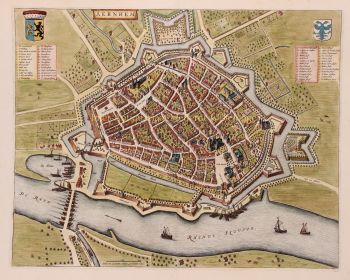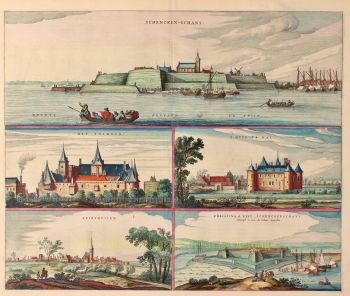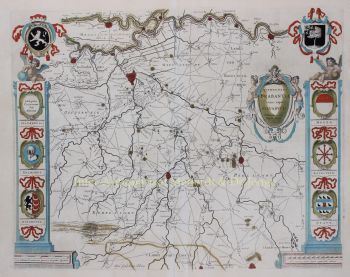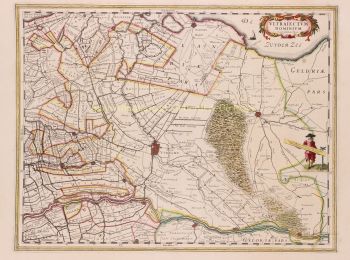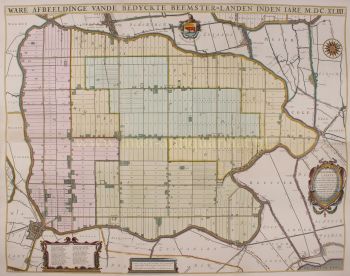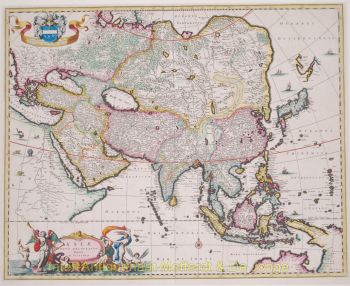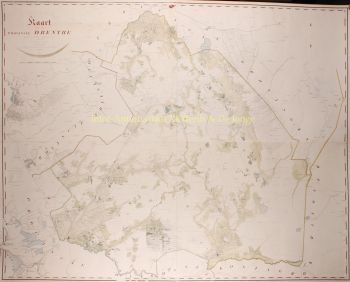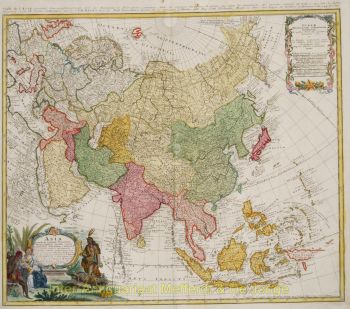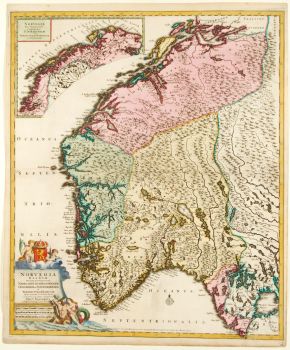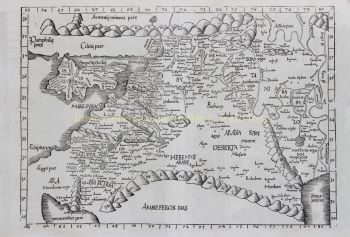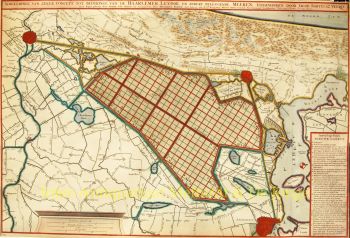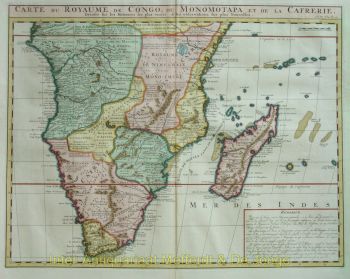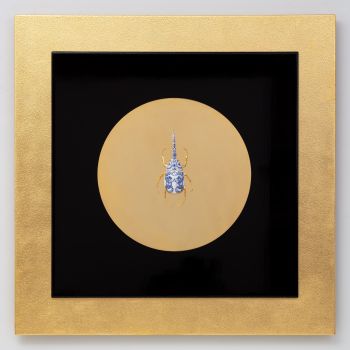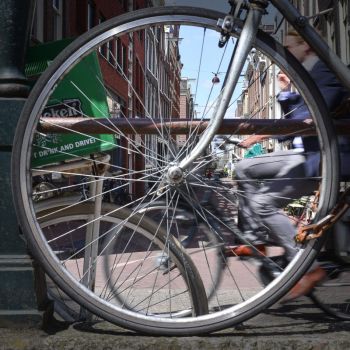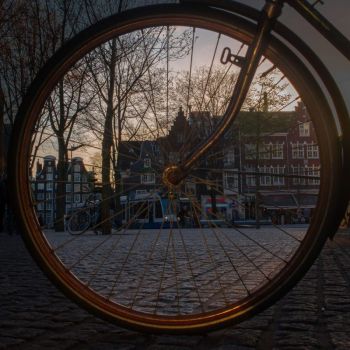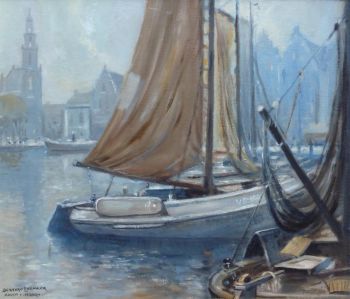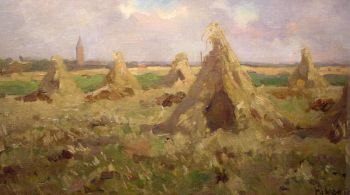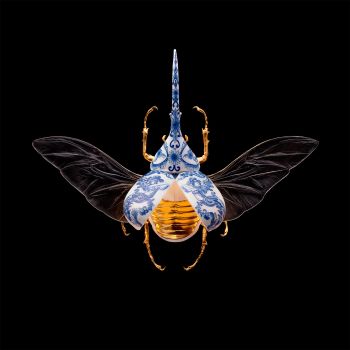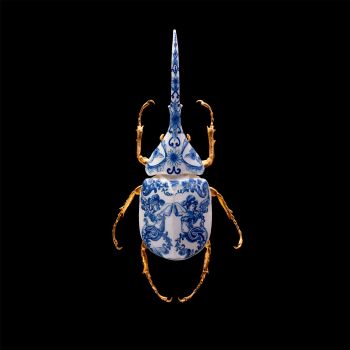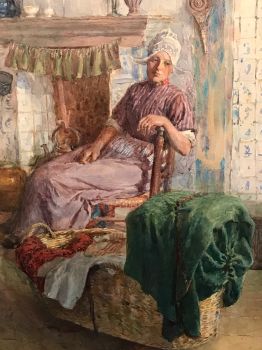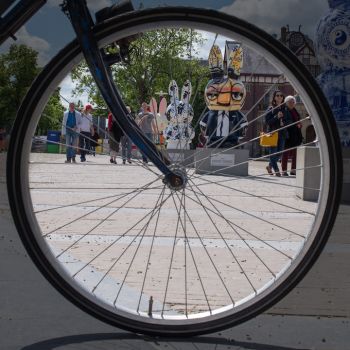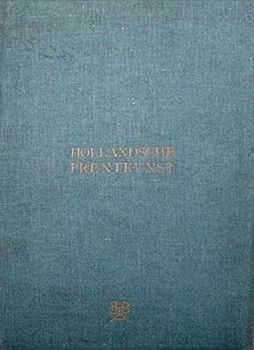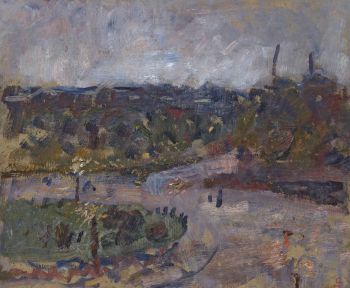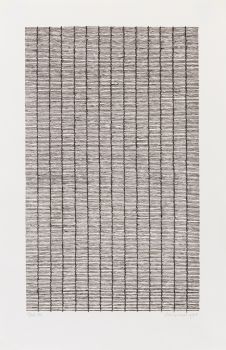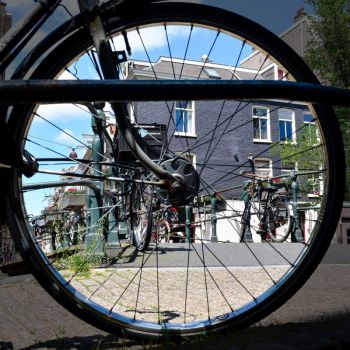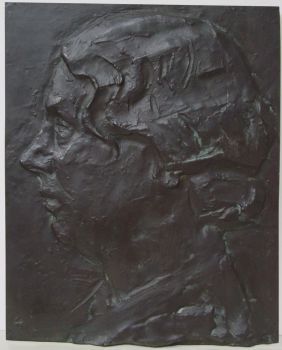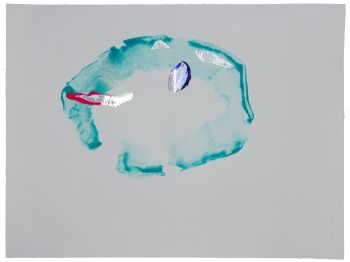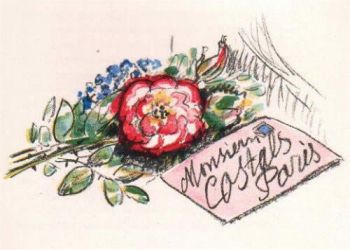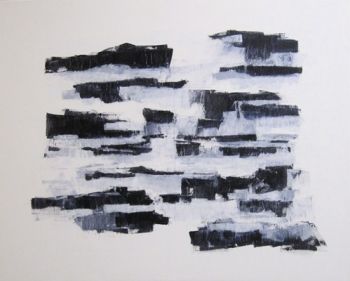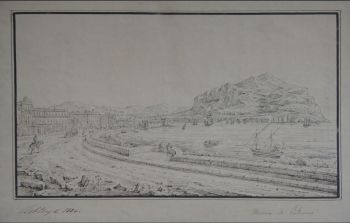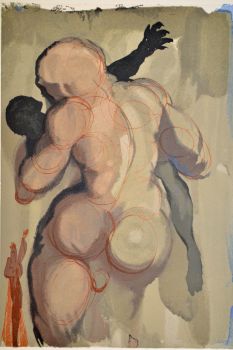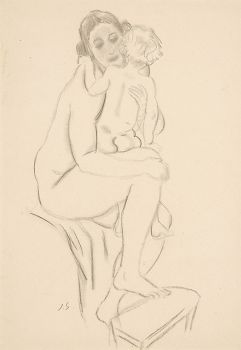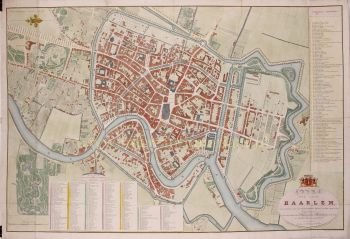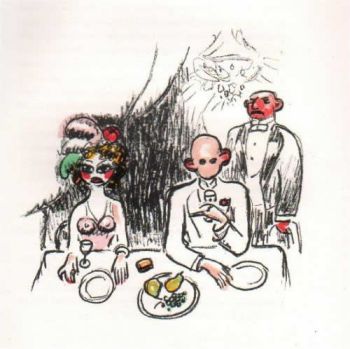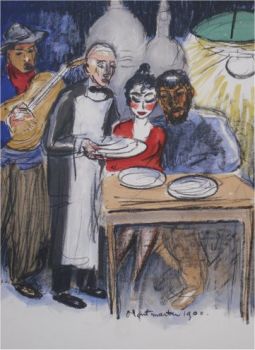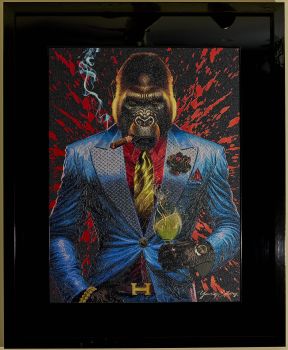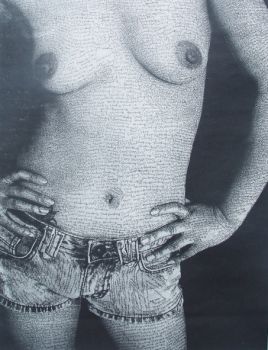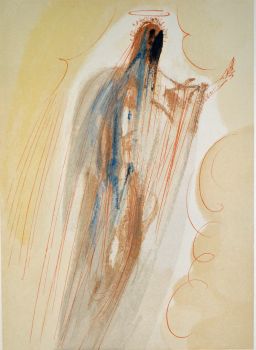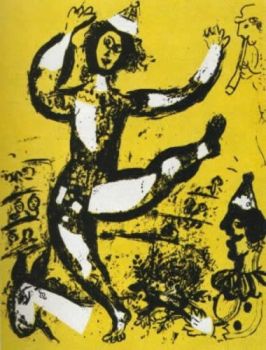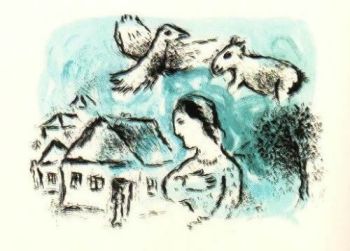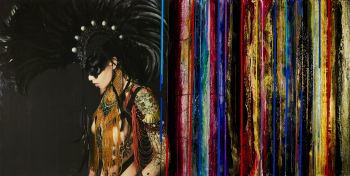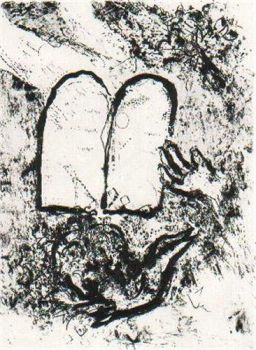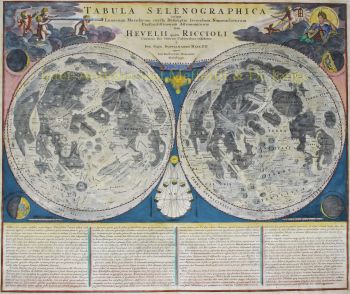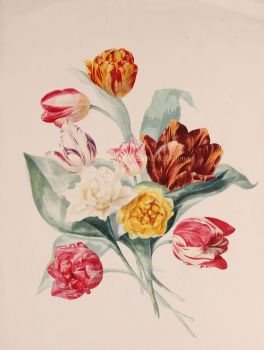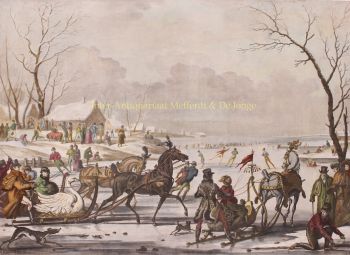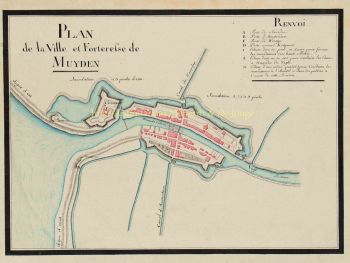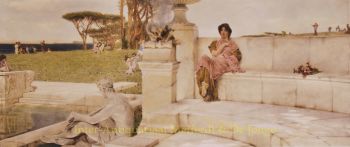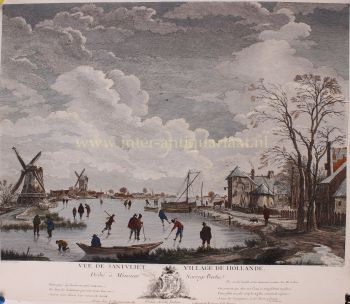The city of Delft in 1649 1649
Joan Blaeu
TintaPapelImpresión
48 ⨯ 57 cm
€ 1.850
Inter-Antiquariaat Mefferdt & De Jonge
- Sobre la obra de arteTHE CITY OF DELFT "Delfi Batavorum vernacule Delft", copper engraving, published in Amsterdam by Joan Blaeu in 1649. Size (print) 37,7 x 48,5 cm. Coloured by a later hand. Verso: Latin description of Delft. Until the 17th century, Delft was one of the major cities of Holland. Already in 1400, the city had 6500 inhabitants and was the third largest in size, after Dordrecht (8000) and Haarlem (7000). In 1560 Amsterdam with 28,000 inhabitants had become the largest city, followed by Delft, Leiden and Haarlem, each of which had about 14,000 inhabitants. In the 17th century, Delft experienced a new heyday. A Chamber of the VOC was established in Delft. The city sent a fleet to Southeast Asia three times a year, importing spices, Chinese porcelain and other luxury goods. The tradition of Delftware originated from the import of Chinese porcelain, with an extensive pottery industry. During the Eighty Years' War, Delft became a center of resistance against the Spanish, after several cities and territories managed to evade Spanish authority in the 1570s. Prince William of Orange briefly resided in Delft, in the former Sint-Agatha monastery, which has since been called Prinsenhof. After William of Orange was declared an outlaw by King Philip II, he was also murdered there by Balthasar Gerards in 1584. William of Orange is buried in the Nieuwe Kerk, clearly visible on the map on the market square. After William of Orange, 45 members of the House of Orange and the House of Orange-Nassau were buried in the royal crypt. This map was published after the Peace of Münster (1648) as part of Joan Blaeu's town book of the Netherlands "Novum Ac Magnum Theatrum Urbium Belgicae Liberae Ac Foederatae". The Amsterdam cartographer and publisher Joan Blaeu set himself the task of simultaneously achieving the objectives of Abraham Ortelius (famous for the publication of the first modern atlas in 1578) and Georg Braun and Franz Hogenberg (known for their town book published at the end of 1600): a multi-volume world atlas added by a number of town books. The town book of the United Netherlands was published in a Latin edition in 1649; the Dutch edition was printed in 1652. Some of the maps included in this work had already been published in older maps, other maps were made entirely new for Blaeu's town book. Price: Euro 1.850,-
- Sobre el artista
Joan Blaeu (1596-1673), nació el 23 de septiembre de 1596 en Alkmaar.
Fue un cartógrafo holandés nacido en Alkmaar. Siguió los pasos de su padre, el cartógrafo Willem Blaeu.
En 1620 se doctoró en derecho pero se incorporó a la obra de su padre. En 1635 publicaron el Atlas Novus (título completo: Theatrum orbis terrarum, sive, Atlas novus) en dos volúmenes. Joan y su hermano Cornelius se hicieron cargo del estudio después de la muerte de su padre en 1638. Joan se convirtió en el cartógrafo oficial de la Compañía Holandesa de las Indias Orientales.
El mapa del mundo de Blaeu, Nova et Accuratissima Terrarum Orbis Tabula, que incorpora los descubrimientos de Abel Tasman, se publicó en 1648. Este mapa fue revolucionario porque "representa el sistema solar de acuerdo con las teorías heliocéntricas de Nicolaus Copernicus, que muestran la Tierra girando alrededor el sol... Aunque el innovador libro de Copérnico Sobre las revoluciones de las esferas se imprimió por primera vez en 1543, poco más de un siglo antes, Blaeu fue el primer cartógrafo en incorporar esta revolucionaria teoría heliocéntrica en un mapa del mundo".
El mapa de Blaeu se copió para el mapa del mundo colocado en el pavimento del Groote Burger-Zaal del nuevo Ayuntamiento de Ámsterdam, diseñado por el arquitecto holandés Jacob van Campen (ahora el Palacio Real de Ámsterdam), en 1655.
La Hollandia Nova de Blaeu también se representó en su Archipelagus Orientalis sive Asiaticus publicado en 1659 en el Kurfürsten Atlas (Atlas del Gran Elector). y utilizado por Melchisédech Thévenot para producir su mapa, Hollandia Nova—Terre Australe (1664).
Como "Jean Blaeu", también publicó el volumen 12 "Le Grand Atlas, ou Cosmographie blaviane, en laquelle est exactement descritte la terre, la mer, et le ciel". Una edición está fechada en 1663. Era un folio (540 x 340 mm) y contenía 593 mapas y láminas grabados. En marzo de 2015, se puso a la venta una copia por 750.000 libras esterlinas.
Alrededor de 1649, Joan Blaeu publicó una colección de mapas de ciudades holandesas llamada Toonneel der Steeden (Vistas de ciudades). En 1651 fue votado en el consejo de Ámsterdam. En 1654 Joan publicó el primer atlas de Escocia, ideado por Timothy Pont. En 1662 reeditó el Atlas Novus, también conocido como Atlas Maior, en 11 volúmenes y uno para los océanos.
Se planeó una cosmología como su próximo proyecto, pero un incendio destruyó el estudio por completo en 1672.
Joan Blaeu murió en Amsterdam el año siguiente, 1673. Fue enterrado en Westerkerk en Amsterdam.
¿Está interesado en comprar esta obra de arte?
Artwork details
Related artworks
- 1 - 4 / 12
Artista Desconocido
A large wall map of Asia by Nicolas de Fer 1647 - 1720
Precio a consultarZebregs & Röell - Fine Art - Antiques
Cornelis Anthonisz Theunissen
MUY RARO PRIMER MAPA IMPRESO DE ÁMSTERDAM, UNA CIUDAD EN ASCENSO1544
€ 175.000Inter-Antiquariaat Mefferdt & De Jonge
 curada por
curada porDanny Bree
1 - 4 / 24Samuel Dejong
Anatomia Blue Heritage, Atlas Closed2017 - 2019
Precio a consultarVilla del Arte Galleries
Bernard Leemker
'Volendammer vissersboten in de haven van Hoorn´20th century
Precio a consultarGalerie Gabriëls
Samuel Dejong
Anatomia Blue Heritage, Hercules Beetle Open2020
Precio a consultarVilla del Arte Galleries
Samuel Dejong
Anatomia Blue Heritage, Hercules Beetle Closed2020
Precio a consultarVilla del Arte Galleries
Lambertus Zijl
Portrait of Juliana, queen of the Netherlands (1948-1990)1900 - 1950
Precio a consultarKunsthandel Pygmalion
1 - 4 / 24Marc Chagall
Frontispiece for Windows for Jerusalem1952 - 1980
Precio a consultarArthouse Marc Chagall
1 - 4 / 24- 1 - 4 / 12


